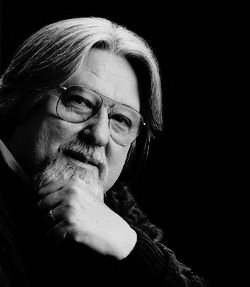« My SDFF - Trinidad | Main | Coffee Break »
November 15, 2008
My SDFF - Two Documentaries on Hollywood Filmmakers

Spine Tingler! The William Castle Story
Jeffrey Schwarz - 2007
Automat Pictures

No Subtitles Necessary: Laszlo & Vilmos
James Chressanthis - 2008
NC Motion Pictures
Seeing documentaries back-to-back on William Castle and Laszlo Kovacs seems less coincidental when you realize the two had crossed paths in real life. Castle has a small walk-on appearance in Shampoo on which Kovacs served as cinematographer. Additionally, Shampoo was directed by Hal Ashby, whose wife, Joan Marshall, starred under the androgynous name of Jean Arliss in Castle's Homicidal.
The basic story of Spine Tingler is about a young man who bluffed his way into show business based on his enthusiasm, and mentioned twice, chutzpah. Largely self-educated, Castle learned not only the craft of staging, but perhaps more importantly, promotion. The documentary also mentions that Castle was constantly fighting a fear of failure.
The overview of Castle's career mostly covers the more successful of his horror films from Macabre through Rosemary's Baby, which Castle bought for himself to direct. While the documentary briefly looks at Castle's output of B films for Columbia Pictures, not mentioned is the film that should have elevated Castle to the higher ranks, When Strangers Marry. Robert Mitchum was the main beneficiary from that film, while Castle went on direct more adventures of the Crime Doctor and The Whistler. There is also Castle's version of his involvement with the film that became Lady from Shanghai, with Castle hoping to direct that film. What is presented is that Castle sought out artistic validation as well as commercial success, but was never able to gain the upper hand against the studio heads who consigned Castle to low budget productions.
Clouzot's Les Diabolique is mentioned as the film that convinced Castle to specialize in horror. Worth mentioning is that fifty years ago, Hitchcock made Vertigo, from the novel by Boileau and Narcejac, while Castle was inspired to make Macabre. One film was a big budget flop while the other became a major hit, earning millions on a budget of less than one-hundred thousand dollars. Even though Castle is sometimes thought of as a Hitchcock imitator, there is plenty of evidence to suggest that Psycho might not have been made, had William Castle not been so successful.

While it is fun to watch John Waters and Joe Dante talk about watching Castle's films in their youth, even better are the stories from former cast members. Darryl Hickman is amused and amusing, discussing The Tingler, while Anne Helm tells of being fired from Strait-Jacket for addressing Joan Crawford by her first name. The more compliant Diane Baker takes over the story about how Crawford controlled almost every aspect of filming, creating a virtual strait-jacket for producer-director Castle.

Fortune was no less foretold for Lazslo Kovacs or Vilmos Zsigmond. Two Hungarian refugees who fled their country with smuggled footage of the Hungarian revolution of 1956, their success came in spite inauspicious beginnings. Starting as a second unit cinematographer for Ray Dennis Steckler and Arch Hall, Sr., Zsigmond quickly became the main cinematographer on a series of extremely low budget films, quickly taking on Kovacs as assistant or second unit cinematographer. Not mentioned in the documentary on Kovacs and Zsigmond is Kovacs fortuitous collaboraton with Richard Rush, beginning with A Man called Dagger. Rush and Kovacs were of the same mind, attempting to create some artistic panache, primarily on the biker films made in the mid Sixties. It was a result of working with Rush that Kovacs was the cinematographer for Easy Rider, the film that propelled him to major studio assignments.
The documentary makes it appear that Zsigmond's career as a major studio cinematographer was a result of Kovacs being unavailable to film Peter Fonda's The Hired Hand. Working with Fonda probably helped, although Zsigmond did photograph a film that should have brought him attention earlier. From 1969, Picasso Summer was virtually shelved by Warner Brothers, with Zsigmond primarily working for schlockmeister Al Adamson.
The films they worked on, together or individually take a back seat to the look at a friendship that spanned over fifty years. Just three years older, Zsigmond was considered a mentor by Kovacs. As consistent as their friendship were their feelings towards Hungary and their goal of encouraging young cinematographers. While both made names for themselves in the early Seventies when Hollywood was looking towards younger filmmakers to attract a dwindling audience, any influence they may have had in changing how films were made is subject for debate. Kovacs ended his career with mainstream films, both with producer-star Sandra Bullock. Zsigmond has been somewhat more adventurous working recently with Brian De Palma and Wood Allen, and reportedly shooting a new film by Alejandro Jodorowsky. No Subtitles Necessary should be given some credit for making me want to see a film Kovacs shot, written by another Hungarian immigrant, Joe Esterhas, F.I.S.T..
Posted by Peter Nellhaus at November 15, 2008 04:06 PM
